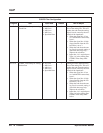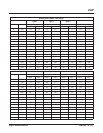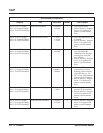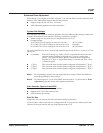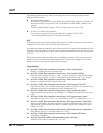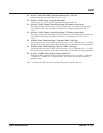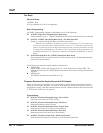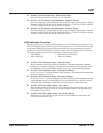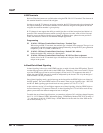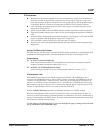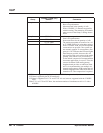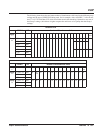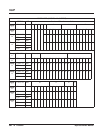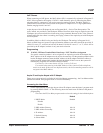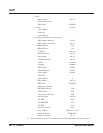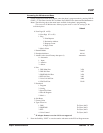
VoIP
684 ◆ Features Aspire Software Manual
H.323 Terminals
Hold and Transfer features are available when using the ITR-2D-1 H.323 terminal. The firmware in
this terminal should be version 2.08 or higher.
In order to use an H.323 phone as an Aspire extension, the H.323 phone needs to be registered with
the Aspire Gatekeeper. An extension number or alias should be assigned to the phone. If both are
assigned, the extension number is given priority.
H.323 phones do not support the ability to send digits after a call has been placed and before it is
answered. This means that features which use single digit service codes, such as Voice Over and
Barge-In, are not available with this type of phone. In addition, these phones doe not provide P-
codes, and therefore, cannot be used with the inDepth application.
Programming
➻ 15-05-01 : IP Phone Terminal Basic Data Setup - Terminal Type
When using an IP/H.323 terminal, the terminal type is defined in this program. The type is set
automatically and this program cannot be changed manually (0=Aspire NGT [new generation
telephones], 1=H.323, 2=SIP, 3=MEGACO).
➻ 15-05-03 : IP Phone Terminal Basic Data Setup - Default URL Address
Define the default URL address for a Smart phone.
➻ 15-05-04 : IP Phone Terminal Basic Data Setup - H.323 Fixed Port Assignment
Set the alias of an H.323 terminal (up to 48 characters in length). Each alias address must be
unique in the system.
In-Band/Out-of-Band Signaling
In-band signaling is the way to send DTMF tone just as audio (in band of the RTP packet). There is
no other message sent to the far end for the DTMF digits. Therefore, if this is used with G.729 pro-
tocol, the DTMF tone will not be received properly. At the level G.729 compresses the audio, it
affects the actual DTMF tone and it can not be interpreted by the far end. This is by the design of
VoIP and there is no way to correct it.
Out-of-band signaling sends a special message to the far end for the DTMF digits (out of band of
the RTP packet). The actual DTMF audio will be muted. There are two signaling types - RFC2833
and H.245. Both signaling types should work on every protocol (G.729, G.711, etc.).
Aspire software version 2.63 and higher supports out-of-band signaling, allowing DTMF digits to
be sent when using G.729 protocol. However, in-band signaling on G.729 will never work on any
phone system unless the defined compression rate is changed.
To enable the out-of-band signal function, you must have software 2.63 or higher, change Program
84-12-31 : H.323 Phone CODEC Information Setup - DTMF Relay Mode to RFC2833 (an entry of
"1"), and change 84-06-10 : VOIPU Setup - DTMF Behavior for the card slot of the VoIP card to
out of band (an entry of "2").



